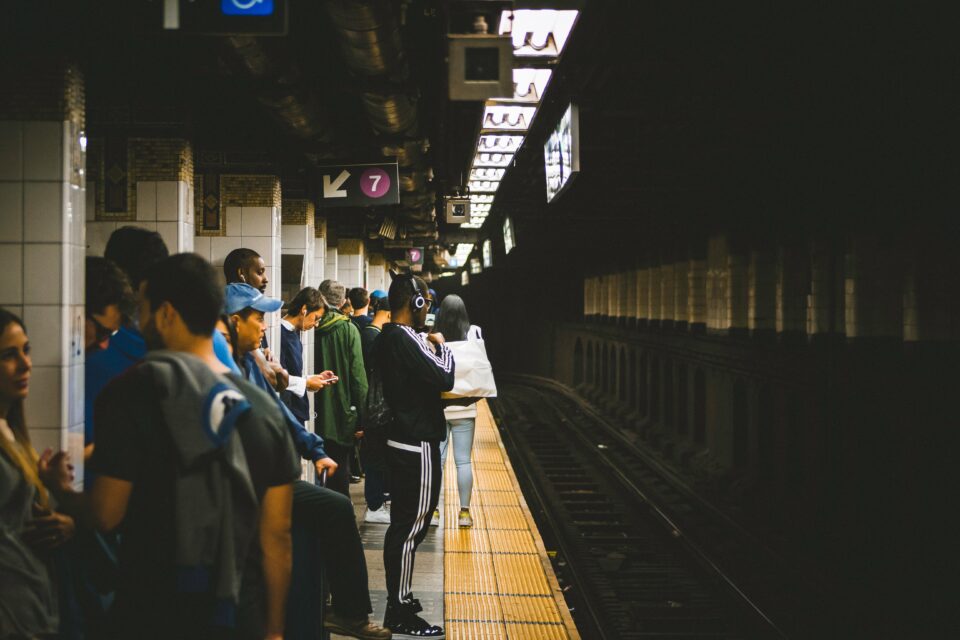Strengthening the Pandemic Resilience of the Subway System with a Crowd Management System
February 7, 2023

Transit systems, vital to the health and vibrancy of cities, came under intense pressure during the COVID-19 pandemic. With the support of a $2.5 M grant from the National Science Foundation, a team from Columbia University, led by Associate Professor of Civil Engineering Sharon Di, is developing tools that will help public transit agencies and subway systems respond to and recover from potential public health disasters in the future.The project is part of the NSF’s Smart and Connected Communities Program, which supports sociotechnical research and solutions that are piloted in conjunction with the communities served. The project, called Preparing for Future Pandemics: Subway Crowd Management to Minimize Airborne Transmission of Respiratory Viruses (Way-CARE), aims to develop a community information and crowd management system for transit agencies and subway riders alike. The project’s goal is to provide transit agencies engaged in planning and policymaking with recommendations to mitigate airborne virus transmission risks to riders, with a focus on helping riders make informed decisions, adapt travel accordingly, and bolster the resilience of transit systems.

“There are three parts to the project,” Di explains. “We use sensors, modeling, and simulation to understand how a respiratory virus can spread in the subway system, then we inform the transit agencies so they can make plans to reduce harm. We are also building ways to inform the public so that they can be better prepared to change their transit behavior.” The final product will be an interactive module for public agencies to manage subway platform crowds, and a crowdsourced app for travelers to receive and self-report subway information.
“One of the most exciting aspects of this project is how interdisciplinary the team is,” says Di. “We have multiple Co-PIs, and we each represent a different direction – crowd modeling, sensing, chemistry, fluid mechanics, epidemiology, behavioral economics, and behavioral social science.” In addition to Di, the multi-disciplinary team includes Professor of Environmental Health Sciences Jeffrey Shaman; Associate Professor of Electrical Engineering Xiaofan Fred Jiang; Assistant Professor of Public Health & Management Kai Ruggery; and Assistant Professor of Civil Engineering and Engineering Mechanics Marco Giometto.
“I’ll work on developing models to describe how people move inside a subway station, while Dr. Jiang will develop the sensors,” Di explains. “Dr. Faye McNeill, Professor of Chemical Engineering and Earth and Environmental Sciences, will study how the aerosol evolves in the air, in collaboration with a fluid mechanics expert, Dr. Giometto, who will simulate how each particle evolves in time and space. Our epidemiologist, Dr. Shaman; Dr. Ruggery, our social behavioral scientist; and Dr. Ester Fuchs, Professor of International and Public Affairs, will then create models and recommendations to influence crowd behavior and movement control.”
In order to develop a better understanding of aerosol dispersion and its interaction with human movement, researchers will leverage camera and sensor data provided by the Metropolitan Transportation Authority (MTA) to simulate the system as a whole, and combine this with epidemiological models of the airborne dispersion processes that affect respiratory virus transmission rates. The team will then provide guidance to public transit agencies based on those findings so that agencies can respond with tactics such as adjusting the placement of a ventilation system, optimizing the crowd flow on the platform, or other instructions that can change how people aggregate. “For example, if people tend to congregate in one area, we can direct the crowd flow to make them spread out,” explained Di. Finally, the virus transmission information can be provided to travelers so that they can adjust their behavior – even a few minutes of timing adjustment can have an impact.
The team will be soliciting feedback from local business owners and workers, especially those who rely on the subway for their livelihoods and have limited access to other transportation options. “It truly feels like a project by the community, for the community,” Di concludes. “We’re learning how to strengthen transit communities in New York City against future shocks, and hopefully these lessons can be applied to cities around the world.”